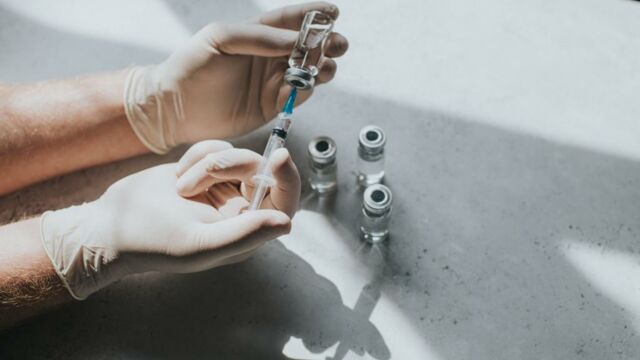This lethal disease could be eradicated by 2040, according to science

The World Health Organization has approved a new vaccine that scientists believe will revolutionize the fight against malaria, which kills half a million people in Africa every year.
Trials have shown that the R21/Matrix vaccine, developed by Oxford University in collaboration with the Serum Institute of India, reduces the risk of contracting malaria by 75%. It can be manufactured at low cost and on a large scale.
Discover our latest podcast
What is malaria?
The threat of malaria is a global issue: a billion people are at risk of contracting the disease, between 1 and 2 million deaths a year are due to malaria, and 90% of these deaths are in Africa.
More under this adMore under this adMalaria is a disease caused by parasites of the Plasmodium genus. According to the World Health Organization (WHO), the disease affected some 241 million people worldwide in 2020, causing 627,000 deaths. The situation is all the more worrying in that, for several years now, parasites have been developing resistance to anti-malarial molecules, and mosquitoes are less and less afraid of insecticides.
The countries with the highest number of malaria cases are: Burkina Faso, Cameroon, Democratic Republic of Congo, Ghana, India, Mali, Mozambique, Niger, Nigeria, Uganda and the United Republic of Tanzania.
More under this adMore under this adA vaccine now exists and is recommended by the WHO.
Malaria Could Be Eliminated by 2040: New Vaccine Offers Hope https://t.co/6A7m21PR7x
— ScienceAlert (@ScienceAlert) October 7, 2023
Read more:Shingles vaccine: Over 1 million people are eligible to get jabbed, should you get it?
A vaccine that's effective, cheap and easy to produce
For Adrian Hill, Director of the Jenner Institute at Oxford University, this vaccine has several advantages: firstly, its remarkable efficacy, reducing the risk of malaria by 75%. The best vaccine used until now had an efficacy of around 50% over one year, losing its effectiveness over three years.
More under this adMore under this adSecondly, its ability to develop on a 'large scale', to reach the widest possible areas of Africa, and enable as many children as possible to benefit.
There are around 40 million children born every year in malaria-prone areas of Africa who would benefit from a vaccine. Children are the main victims of malaria. Ours is a four-dose vaccine over a 14-month period, which means that around 160 million doses are needed.More under this adMore under this ad
The Serum Institute of India, our industrial and commercial partner, can produce hundreds of millions of doses of this vaccine every year, whereas the previous vaccine could only be manufactured at a rate of six million doses a year from 2023 to 2026, according to Unicef reports.
According to the director, the third real advantage of this vaccine is its cost: thanks to the participation of international agencies, a dose should cost around five dollars. This means that the vaccine can be distributed even in very low-income countries.
More under this adMore under this adRead more:As if Coronavirus weren't enough, the world will soon have to face 'Disease X'
Multiple failed attempts at a vaccine
Scientistshave been trying to develop malaria vaccines for over 100 years, and more than a hundred of them have been tested in human clinical trials, with no results. Adrian Hill explains:
Malaria is neither a virus nor a bacterium. It is a protozoan parasite, several thousand times larger than a conventional virus. Take its gene count, for example: covid has 13 genes, malaria has around 5,500. This is one of the reasons why malaria is so complex.More under this adMore under this ad
In the 1980s, scientists began to sequence the genes of the malaria virus. Unfortunately, the vaccines developed following this discovery also failed to deliver convincing results. Malaria is a parasite that has developed all kinds of immune escape mechanisms over the years, meaning that it is stronger than the human immune system.
Today, malaria is high on the list of diseases to be eradicated. Adrian Hill adds:
I don't think this will happen in five or ten years' time, but rather in around fifteen. So 2040 would be a reasonable target.More under this adMore under this ad
Read more:Viking's hand disease: Researchers have found its remote origin, and you will be surprised
This article has been translated from Gentside FR.
Sources used: